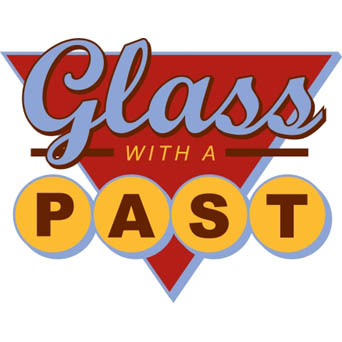Today I’m answering reader emails, just in case you have the same questions. If you do have a melting glass question, please let me know through the form on the About/Contact page.
Onward!
Q: Hi. I just received the five molds I ordered for slumping bottle bottoms. But I have a question. What type of kiln wash do you recommend?? The one I have now I don’t know the name of, it is almost gone and the box got wet. So just have the bag. But to remove it from my kiln shelves, I have to work the shelf over with drywall screen. I feel like this would destroy the details in the mold. Also, five coats might fill in the detail, so to obliterate it. I looked thru all your supply offerings and found no kiln wash, so am afraid to start playing with my new molds. (Not good since I have a big show coming up in 5 weeks!) Can you please help me out??
A: It hadn’t even occurred to me, but of course you are absolutely right, I should have kiln wash available, as well as a tutorial. I usually do just two to three even thin coats to preserve the details. You’ll want to use an artists brush rather than a traditional kiln wash brush. When I need to remove it, I use a firm bristled plastic brush, the kind for cleaning sinks.
[Edited to add: Glass With a Past kiln wash is in the research stage, look for it soon!]
Q: First, I love your work and think all your tutorials are fantastic! If I lived in Utah, I’d come take classes. I have always been drawn to glass art and have taken a few local classes in glass blowing, but it is too intensive for me and I don’t want to work with frit. I would like to try recycled glass bottle fusing (donut rings for wind chimes and jewelry to start). Could you recommend a starter kiln that won’t break the bank? What qualities or features should I look for? Is there a website (besides eBay) or company where I might purchase a used kiln?
A: I think the best beginner kiln is one that is programmable. It is possible to use a manually controlled kiln, but if you are learning a new art form, also having to learn how to manually fire is discouraging. I also recommend at least a 12″ shelf if you can get it. 6″ kilns are tempting because they are often less expensive, but everyone I know (including myself) wanted a larger kiln immediately. My first kiln had 15″ octagon shelved and I used that for 7 years before upgrading.
In terms of used kilns, I don’t know of any one place that sells them. I cruise our local want ads, and do see reasonable kilns fairly often, but they go fast, so you have to be diligent. Another option, if you are on facebook, is a group called Fused Glass Connect, or Glass Artists Connect (I am in too many groups) but it is where people list things for sale. There may be someone near you selling their kiln or upgrading.
As far as brands go, I have a skutt and a denver and have been very happy with both. I think you’d like pretty much any of the large kiln makers, they are all good.
Q: During your class at curious mondo you had a set of heat cured paints. How and where can I get these.
It looks like a great lady’s night of wine and snack at my shop. I have a small studio carved out of the floor space and a pretty decent size dual media kiln.
A: I’m going through old emails and realized I hadn’t answered this one. I bought mine at Joanne’s, they were mixed in with the other acrylic paints, you have to look at the labels carefully to make sure they are the glass ones. It seems like they had a little sticker with a picture of a wine glass on the top. There are several brands, I don’t know that any one is better than the others, it seems like a personal preference kind of thing.
I used them for one of my weekly evening classes, and people loved them. We did flattened wine bottle clocks, I flattened and drilled the bottles ahead of time, and the ladies painted them. Work great.


Aloha!
I noticed that you use a tile cutter, and I was wondering if this is a manual cutter, or a wet saw?
I get your newsletter and am really enjoying it!
Mahalo!
Leilehua Yuen